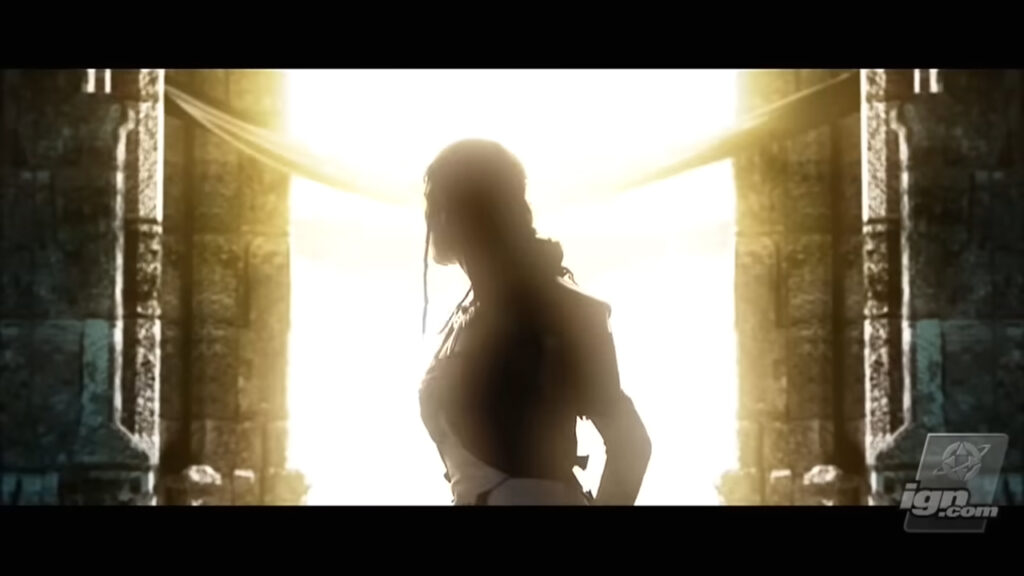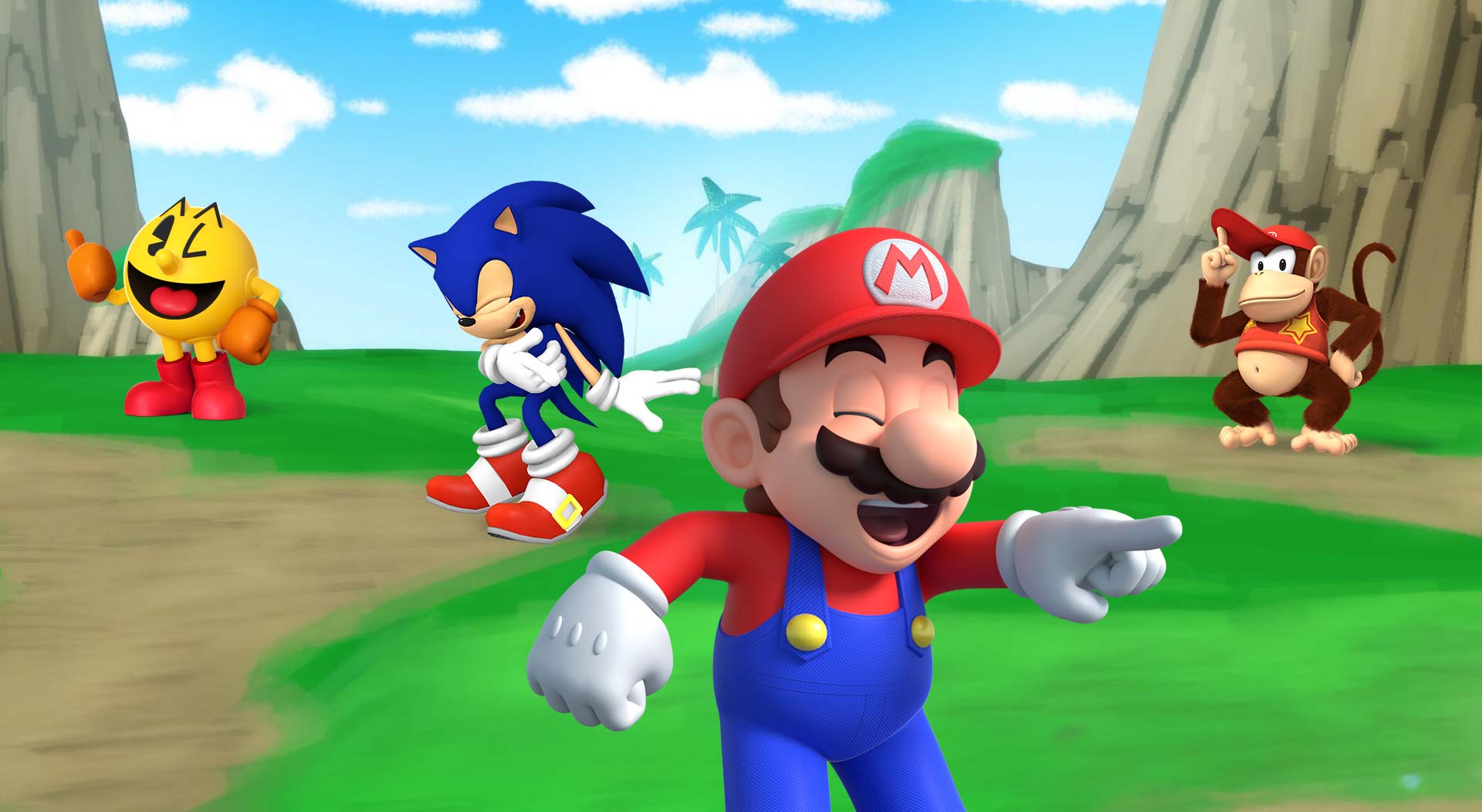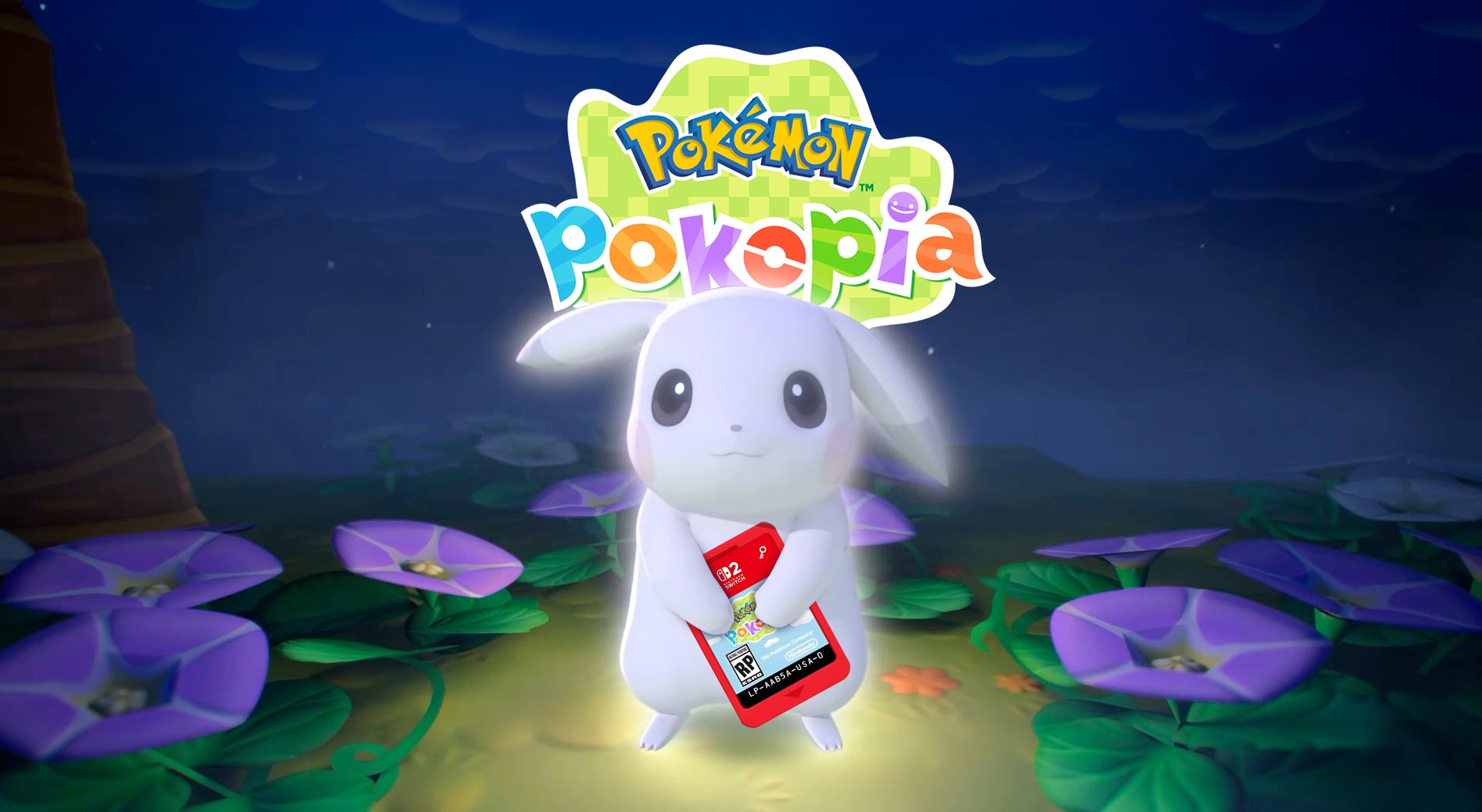Blatant Lies For Fun And Comedy

Blinded by the light of… well, not truth, but something.
April Fool’s Day and the video games industry – video games journalism especially – have a long, goofy history with each other. It’s a relationship spanning decades, like one of those couples united by their devious love of pranking everyone around them. April Fool’s Day gaming pranks predate the public release of the World Wide Web in 1993, though likely not the internet itself. They boil down to a few different types. The first – more common in the old days of gaming magazines and schoolyard rumours – are alleged secrets in already-released games, often with overly convoluted methods of unlocking said secrets that few would ever be capable of managing. The secrets are, of course, made up, and the unlocking steps are complete bunk designed to bait the gullible into wasting their time. The second type is fake announcements for upcoming releases that don’t actually exist. This doesn’t necessarily refer to entire fake games, though the most legendary pranks often do. They can often feature made-up DLCs or add-ons of various kinds, or remasters/re-releases of existing games – or even supplementary related to games. These first two types are the ones that, unsurprisingly, inspire the most gamer rage, and will make up this list of the most sadistic April 1st silliness. The last kind are actual releases of game updates or content with a comedic theme that frequently would not fit the game in question – these are, of course, less “pranks” and more like celebrations of April Fool’s Day itself, and thus won’t be covered in this list. So let’s look at 3 classics of April Fools Days past that fooled people in the gaming sphere, inspiring disappointment and saltiness along with the laughs.
In The Beginning – Sheng Long
Screenshot attribution: https://en.wikipedia.org/w/index.php?curid=6702499
Ah, Sheng Long, supposed master of Street Fighter II’s Ryu and Ken, courtesy of Electronic Gaming Monthly. It’s an obvious place to start – definitely not the first gaming-focused April Fools joke, of course, but by far one of the most famous and influential, both on gamers themselves and even on gaming development. I don’t know how brutal I’d call this one when its status as a joke is pretty clear, but the simple fact remains that a lot of people did believe it. As the Wikipedia article on Sheng Long goes into detail on, the joke was reported on more seriously by other outlets, convincing far too many impressionable Street Fighter II fans that the prank character was legitimate, leading them to attempt the (especially in hindsight) very silly steps to unlock a battle against him.
There are a lot of fun details to this hoax – it’s built off a mistranslation in the actual game, for starters, which goes some way to explaining how many people were convinced. Then there are the literal details in the page spread itself, with impressive fake screenshots depicting the character. But the really amazing things came after, with Super Street Fighter II Turbo bringing in a VERY similar concept via the character of Akuma, EGM seemingly had a hand in creating one of the most popular characters in the Street Fighter franchise. Ryu and Ken’s actual master, Gouken, introduced later, greatly resembles the original Sheng Long design, and Capcom has more bluntly paid tribute to Sheng Long a couple of times in the years since. Overall, I think this prank may have disappointed a lot of people initially, but between both the clearly tongue-in-cheek initial page spread and the immense positive influence the whole thing has had over the past 33 years, this has ended up as one of the least cruel April Fool’s projects in gaming history.
The X and the Marks – Metal Gear Solid X

GameNOW knew damn well what they were doing with this one.
Can’t say the same for this one, though. Hoo boy, time for something toxic. The year was 2002, a full 10 years after Sheng Long, right as the PS2 was affixing itself atop the gaming industry mountain for the foreseeable future, and as Metal Gear Solid 2 was being regarded as bizarre, brilliant and disappointing by various sides of the public discourse. And so, GameNOW decided to just chuck a grenade in there and see what happened. I respect the commitment to chaos, so let’s dig into this.
When Metal Gear Solid 2 released over 23 years ago (wow, definitely don’t like that), it was a much-anticipated and critically praised game that had a couple of controversies. One was just the standard console war stuff – it was a third-party PlayStation 2 exclusive, a major release that continued to cement the PS2’s dominance before the release of its competitors. Obviously, anyone who wasn’t a PlayStation fan was also not a fan of this – including those anticipating the new Microsoft Xbox (which released only 3 days after MGS2 itself). The other was, as everyone knows now, Raiden – the effeminate, deliberately-annoying newbie who takes over from Solid Snake as the game’s protagonist following the prologue. Many were very salty about this – the game had been advertised as being about Snake, partly by taking most trailer footage and demo content from the prologue (where you actually do play as Snake) and partly by straight-up replacing Raiden’s model with Snake’s in footage set later in the game, really showing Hideo Kojima’s dedication to keeping a secret. I for one think this was a great and interesting twist that made the game more interesting by providing a new perspective on Snake, exactly as Kojima intended, but damn it, some people really just wanted more Solid Snake.
So, a few months later, GameNOW drops an “exclusive reveal” that plays on both of these points – an upcoming improved version of Metal Gear Solid 2 called Metal Gear Solid X, seemingly exclusive to Xbox and with a whole new scenario playing Snake’s side of the Big Shell story, instead of “that punk Raiden”, to quote the article above. I distinctly remember seeing this as a teenager, though I could swear the layout was different – perhaps it was an Australian magazine republishing the story? In any case, I believed it and thought it sounded amazing. Still do, in fact. Specific details like being able to play things like the Harrier fight or the Vamp battle from the real MGS2 from Snake’s perspective really add to the article, as does fan service like the Revolver Ocelot fight – and it’s all brought together with some very impressive mocked-up screenshots.
Honestly, the whole thing has gotten even more realistic as time has passed. Firstly, there was an actual re-release of MGS2 with new content, titled Metal Gear Solid 2: Substance – it was multiplatform, and there was no full-canon story content, but there were non-canon, low-budget “Snake Tales” with reused assets and text dialogue that let you play as Snake in Big Shell. I actually believed for years that MGSX had been real but downgraded into Substance, and never got around to buying it. Secondly, it was only a few years later, within the same generation, that Capcom followed almost the exact MGSX playbook with Resident Evil 2’s PS2 version. A re-release of a previously console-exclusive game, featuring the entire original campaign plus a new one showing the story from the perspective of a supporting character (Ada Wong, in her special Separate Ways mode) – sound familiar? It worked, too, as Separate Ways is well-regarded and was given an expanded remake in the form of DLC for the RE4 remake. Lastly, next month we also have, eerily, a new version of Metal Gear Solid 3 that distinguishes itself by changing the number in the title to a letter or symbol (Δ, or “Delta”). It’s a remake, rather than a re-release, but still! All these things lead me to crown this one probably the very meanest April Fool on this list – it’s not often that a joke becomes more realistic over time, but even without all these coincidental events, the initial joke dangled red meat in front of a lot of people, knowing it was an illusion the whole time. Brilliant, in my opinion, but still brutal.
IGN’s The Legend of Zelda Film Trailer
Legend of Zelda (April Fools’ Day) Movie Trailer Premiere
Jokes aside, the whole thing is the result of a great deal of hard work, talent and love… and apparently only a few thousand dollars.
With the recent announcement of the official live-action The Legend of Zelda movie, and the much more recent confirmation of its English lead actors (Bo Bragason as Zelda and Benjamin Evan Einsworth as Link), it’s fitting to take a look back at the time IGN jokingly jumped the gun by about 17 years. I remember this trailer/fan film dropping when I was in university – I don’t recall being personally fooled by it, given that I realised damn well what day it was, but I certainly appreciated the effort put into it and thought it was some impressive work. Many other people, though, were seemingly fooled by it, at least if you go by the statements of IGN and director Sam Balcomb. The trailer upload I’ve linked (heh) above describes a huge number of fans being ‘very, very angry with (them)”, and this Inverse article from 2021 digs further into the trailer’s ambitious creation process, the large number of people who believed the trailer regardless of their feelings on its quality, and how the project’s overall higher quality compared to fan films of the time helped to sell it to this audience.
The Legend of Zelda fan trailer itself, specifically an adaptation of the tremendously popular Ocarina of Time instalment released on the Nintendo 64, is surprisingly polished. The CGI is dated, of course, but it looks solid for something produced on a few grand in 2007. Camille C Brown, an actress I can unfortunately find nothing on (Google searching brings up nothing but articles on the Zelda trailer and a different actress named Camille A. Brown), shoulders the bulk of the trailer’s dialogue in impressive fashion, her Zelda calm and imposing. J.R. Killigrew’s (a very elven-looking actor who also appeared in Zack Snyder’s Watchmen as David Bowie) silent performance as Link is fitting and faithful to the games, with some impressive stuntwork. It’s all something that wouldn’t pass for a Hollywood production today, but is still entertaining to watch as a “what could have been” sort of thing. It’ll be interesting to compare to the eventual real Legend of Zelda film, coming in 2027 – especially if the theories about it also being based on Ocarina of Time turn out to be true. I may well revisit this in a couple of years.
So, where should this go on the “meanest pranks” list? Well, damn it, I know that a lot of people got mad about it, but I just do not have the heart to call this one out – even in respect for how it played so many gamers for fools. Reading up on the creation of this short, it was a clear labour of love for the director and a significant number of the people involved, one that was only set to be uploaded on April 1st, late in the game. The lack of any prior announcement, and the fact that it landed right on the day rather than in a monthly magazine, just makes me feel this should’ve been clocked and celebrated for the start for what it is, rather than a target for angry gamers – even the creators were clearly shocked at how many people were taken in by it. Respect to them.
Conclusion
A new hoax for a New Generation. Of course, EGM wasn’t going to stop at one.
So that’s three down. This was fun, and I plan to look back at some more April Fools legends – perhaps next time I can focus on things that actually came out! For now, these classic pranks are good to look back on – they’re all examples of pretty good-natured pranks (with some admitted spice, especially in Metal Gear Solid X) that could never have been made without a deep and abiding love for specific video games and the medium of gaming in general. The direct inspiration EGM took from the “You must defeat Sheng Long to stand a chance” translation error in Street Fighter II, the highly specific moments used for the fake MGSX screenshots and the sheer love that director Sam Balcomb clearly held for Link and Zelda that comes through in every part of his fan trailer are what take these “mere jokes” and elevate them to something people talk about decades later. I hope we see something similar in the future, as unlikely as it seems in a more interconnected world where people are… wiser? More distrustful? I guess it’s a matter of perspective.





